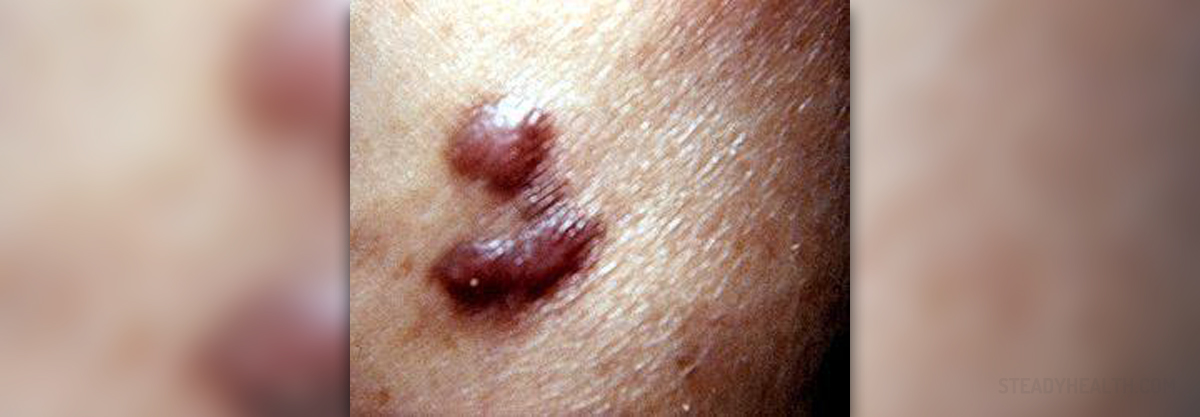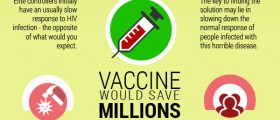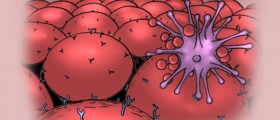
Kaposi's sarcoma is a serious malignant disease affecting the skin and mucous membranes of the mouth, nose and anus. It develops in a form of red and purple patches and eventually may spread to internal organs such as the liver, lungs and intestinal tract.
More about Kaposi's Sarcoma
The skin and mucous membranes of the affected patients are covered with flat or raised purple plaques. The tumors are rich in network of small blood vessels, hence the color of the lesions.
There are several forms of Kaposi's sarcoma and they are classified according to their appearance. The rarest form is definitely 'classic' Kaposi's sarcoma which predominantly affects Mediterranean males and mid-European Jews.
There are three different types of lessons. Nodular lesions generally vary in size and thickness and are almost always purple. They may also have a brown or yellow halo around them. Infiltrating lesions affect deeper layers of the skin and can be quite huge affecting large portions of the skin. And finally, lymphatic lesions may resemble swollen lymph nodes and the only way to differentiate the two is to perform biopsy.Clinical Characteristics of Kaposi's Sarcoma
This type of sarcoma is asymptomatic in early stages of the disease. Non-specific signs of the sarcoma usually include fever, unexplained weight loss and sweating. The tumor usually occurs together with symptoms and signs of AIDS or not. It is also possible to develop lymphoma or even tuberculosis prior developing Kaposi's sarcoma.
Once the symptoms and signs of the sarcoma fully develop they depend on the actual site of skin and mucous lesions.
Causes and Risk Factors of Kaposi's Sarcoma
Kaposi's sarcoma typically accompanies AIDS. Namely, this tumor predominantly affects immunocompromised patients. There are several theories regarding connection between AIDS and Kaposi's sarcoma. Still, it is clear that depression of the immune system caused by HIV virus eventually leads to inability to prevent the occurrence of certain malignant tumors, among which Kaposi's sarcoma most commonly occurs.
Treatment and Prevention of Kaposi's Sarcoma
Kaposi's sarcoma is incurable. All forms of the disease are sensitive to radiation therapy. Therefore, majority of patients are treated with this treatment modality. Chemotherapy may be effective against the tumor. However, it enhances further depression of the immune system. And finally, some patients may benefit from biologic therapy (treatment with interferon and interleukin-2).
Since Kaposi's sarcoma is closely related to AIDS and also affects patients who have undergone organ transplantation it is clear that it can be only prevented if the patients have not developed the mentioned problems in the first place. Therefore, by not contracting HIV one may avoid Kaposi's sarcoma later in his/her life.

















Your thoughts on this
Loading...